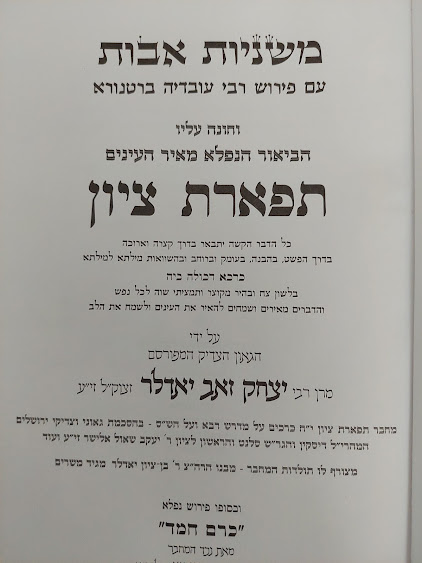In Avot 3:17 Rabbi Akiva teaches a mishnah that is all to do with protective measures. It reads, in relevant part, as follows:
רַבִּי עֲקִיבָא אוֹמֵר: מַסֹּֽרֶת סְיָג לַתּוֹרָה, מַעְשְׂרוֹת סְיָג לָעֹֽשֶׁר, נְדָרִים סְיָג לַפְּרִישׁוּת, סְיָג לַחָכְמָה שְׁתִיקָה
In English: Rabbi Akiva used to say: “Tradition is a fence for the Torah, tithing a fence for wealth, vows a fence for abstinence; a fence for wisdom is silence”.
That the first-mentioned fence is מַסֹּֽרֶת (masoret, “tradition”) is almost unanimously accepted by the commentators, though inevitably there is some scope for discussion as to precisely what “tradition” Rabbi Akiva has in mind. It has been taken to be the written text of the Tanach, the canon of books that are holy to the Jewish people. Rabbi Yitzchak Magriso, in Me’am Lo’ez, takes the view that it applies specifically to the Five Books of Moses, tying the word masoret to the notion of the Masoretic text. Following the Bartenura, Rabbi Yisrael Meir Lau (Yachel Yisrael) explains that Rabbi Akiva means the oral tradition of spellings and pronunciations of words contained in the written Torah. It may however also mean the oral tradition of the unwritten Torah, which is the very substance of Avot: this appear to be the view preferred by ArtScroll Publications’ Rabbi Meir Zlotowitz.
Browsing through the recently-published English translation of the Meiri’s commentary on Avot in his Bet HaBechirah, (details here), I spotted a quite different view of this teaching. While also endorsing the notion of masoret mentioned above, the Meiri initially reads the mishnah as teaching that it is מסרות (masarot, “mnemonics”) that are a fence to the Torah. They protect the Torah from being forgotten by providing handy ways for people to remember their learning with greater facility. Visually, the two words are almost identical: מסרת and מסרות.
My first thought was that the Meiri’s position here was unique, but subsequent investigation revealed that he was not alone. The same explanation is given by Rabbi Shlomo Adani (1567-1629) in his Melechet Shlomo, citing HaRav Rav Yehosef on this matter.
My second thought was that the suggestion that Rabbi Akiva had endorsed the use of memory aids was anachronistic, because memory aids seem to be creatures of the Talmud rather than the Mishnah. But here too I was wrong: while mnemonics are not common in the Mishnah, I have learned of the existence of two of them (Menachot 11:4 and Nazir 6:2). In both cases the Tanna in whose name the mnemonic was taught was a talmid of Rabbi Akiva himself—they were Rabbi Yehudah and Rabbi Yose respectively. I expect that there are other examples and hope to find them.
So can we deduce whether Rabbi Akiva, in teaching that something was a fence to protect the Torah, had in mind “tradition” or “mnemonics”? While both are feasible, my feeling is that tradition is the better bet. Rabbi Akiva lived, and died, in an era in which Torah teaching was prohibited and in which he and his colleagues carried on teaching at risk to their lives. Some, including Rabbi Akiva, were martyred for doing so. He surrendered his life for the principle that Torah should be taught and transmitted from generation to generation; without transmission there would be no Torah. If his words in this mishnah are read as an exhortation to others to follow his example and teach Torah wherever and whenever they could, Jewish life and Jewish values would be saved.














